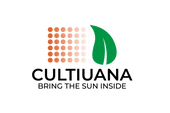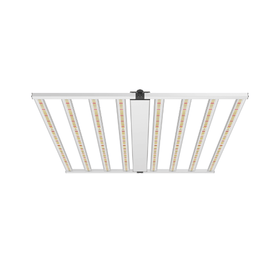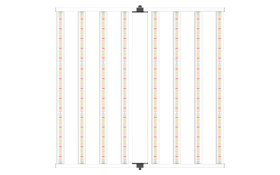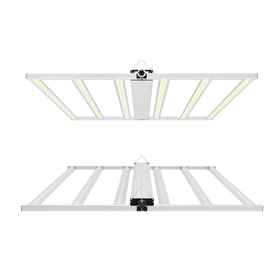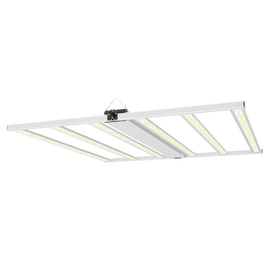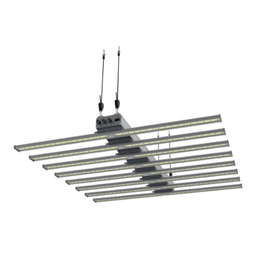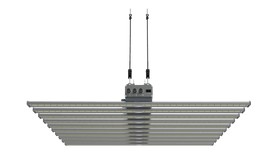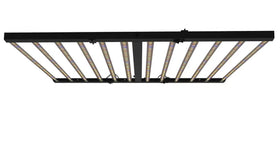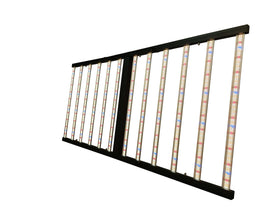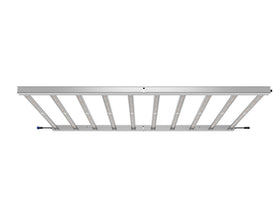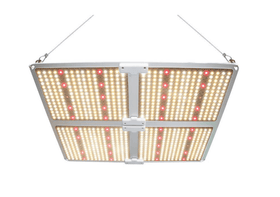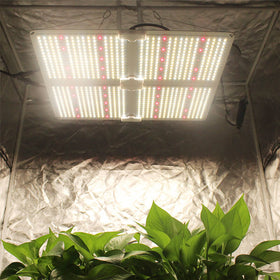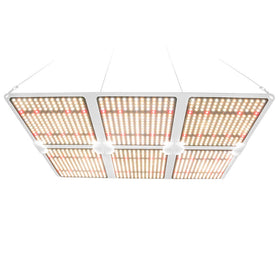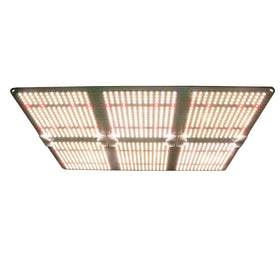Full Spectrum LED Grow Lights
Full spectrum LED grow lights are one of the substitutes for sunlight. By using LED artificial lighting, growers can imitate the sun in a more controlled environment which offers an increased level of protection from insects and diseases, reducing the need for potentially dangerous pesticides and reducing the number of crop failures.
Here are a few things you MUST know before buying full spectrum grow lights:
PAR - Photosynthetically Active Radiation. It refers to the range of light that plants are using for photosynthesis.
PPF - Photosynthetic Photon Flux. It is the total amount of PAR produced by a lighting system each second. The unit of measure is micromoles per second or umol/s. It tells you how much light is produced by an LED grow light itself.
PPFD - Photosynthetic Photon Flux Density. This is the amount of PAR that falls on a plant canopy per second, and is measured in umol/m2/s.
Photon Efficacy. It describes how efficient a given led grow light is at converting electronic power energy into photons of PAR and can be measured in μmol/J. The higher the number, the better the light is at converting electricity into photons of PAR.
To choose the best LED grow light for indoor plants, you will have to consider the following factors:
1. High PPFD, Efficacy & Even Footprint
The best full spectrum leds for indoor growing plants are ones that can deliver a high PPF light output (measured in μmol/s & at least 2000 μmol/s), and operate with high efficiency (measured in μmol/J & at least 2.6 μmol/J).
Here’s a general understanding of how much your plants may need for PPFD.
Seedlings, clones, and mother plants: 200 to 400 PPFD.
Vegging plants (Veg to Early Flower): 400 to 600 PPFD.
Flowering, fruiting, or budding plants: 600 to 900 PPFD.
PPFD, efficacy, and footprint are highly related through hanging heights and light spread. The higher you hang your light, the larger coverage you will receive but the lower the PPFD and efficacy.
So pay close attention to uniformity when evaluating these three things. Make sure the lighting system produces a PPFD that should be fairly even The outer numbers should be close to mirroring each other, not varying too much from corner to corner.
2. Wavelengths and Full Spectrum
Indoor plants also produce full-spectrum lighting, which perfectly mimics the light spectrum of sunlight and has been proven to help plants grow healthier.
full spectrum LEDs are becoming extremely popular, especially for growing indoor plants. A full spectrum is a good lighting recipe for each growth stage of your plant's life. If you don't offer the right color of light, plants won't grow well as you expected. They can underperform, growing small and producing low yields no matter how much you spend. So a full spectrum grow light allows you to control what color spectrum to use at what stage in your plant's life cycle.
So what is full-spectrum?
It simply means that the entire wavelength of light is similar to sunlight, the visible wavelengths of lighting include the 380nm-740nm PAR range, plus the invisible wavelengths too, like infrared and ultraviolet.
It is hard to say exactly which part of the color in the spectrum is best but a large part of it has to do with the type of light your plants are grown under.
Hence, keep your garden get enough blue light during the vegetative cycle and plenty of red light for blooming. Let's take a look at the two full spectrums below:

The left one is a spectrum that works great for vegetative growth. Compared to other lights, the blue spectrum falls between 400nm-500nm. You can see the blue peek of the visible spectrum is slightly higher than the red side.
As you may know, blue light is your best bet in the vegetative stage. It promotes smaller but thicker leaves and keeps your plants growing a bit shorter instead of faster to develop longer internodes. At this point, you want to keep your blue light levels at 100 percent and maintain red light at around 60 percent.
As the plant approaches its flowering period (see the right spectrum for the flowering stage), red light which ranges from 635-700nm is highly effective at regulating the growth and development of plants. Red light helps to flower and fruit and prolong flowering.
However, if crops are grown under only red light, they will have a stretched, elongated appearance; the leaves are thin and large and plants become tall.
So in the flowering phase, try to give your plants a very high power in red with a low level of blue. Because when your crops reach their late flowering phase and are moving toward harvest, light in the blue spectrum can be reduced.
This is the key to maximizing yield and dense flowers. Studies show that growth with 90-100 percent red light and around 60 percent blue light is quite reasonable.
Overall, full spectrum led grow lights are considered to achieve greater intensity for less energy input in the long run.
Looking for high-quality LED grow lights at an affordable price online? Then you've come to the right place. Cultiuana is your source for growing LEDs.
Whether you grow in a vertical rack, greenhouse, indoor garden, or grow tent, we have a solution for you. We offer 100w LED grow lights,720w LED grow lights, 800w LED grow lights, 1000w LED grow lights, etc.
We also provide LED supplemental grow lights & professional LED grow lights for commercial growers by the best-LED manufacturers in the horticulture industry.
If there’s anything we can do to help you determine which LED grow lights are right for you, please reach out. We’ll talk through the needs of your specific grow space and support you all the way.
